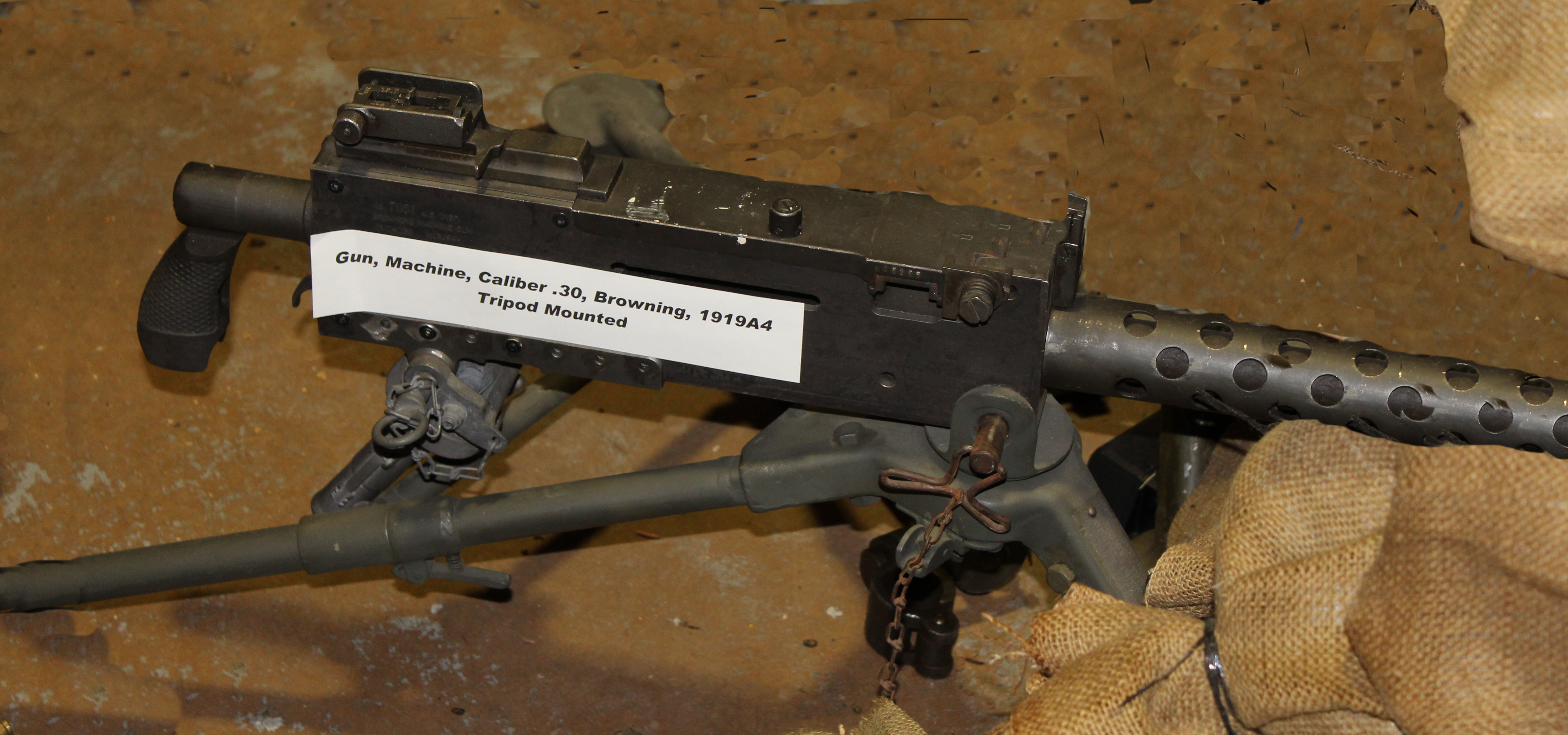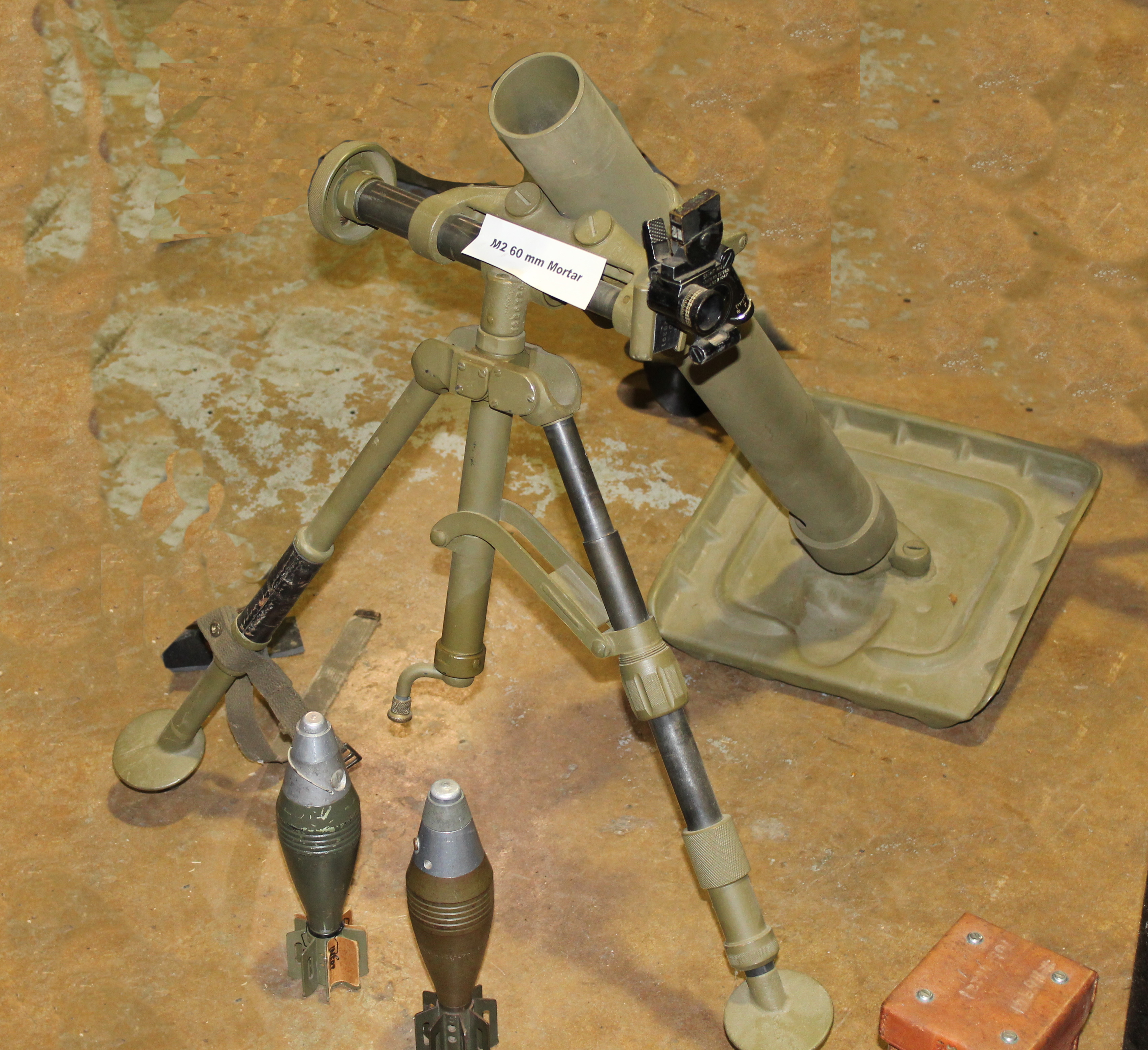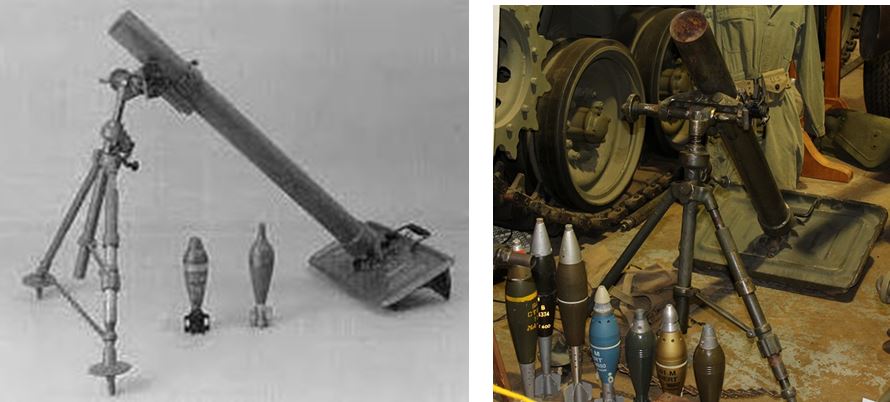The .30 M2 Carbine (Graphic Training Aid)

This is an oversize training model of the M2 carbine developed by the US Military for small arms class room instruction. Graphical training aids were twice the size of the original M2 carbine and was made of wood, aluminum, zinc castings and steel.
The .50 Caliber M2 Machine Gun "Ma Deuce"

The .50 caliber M2 Machine gun designed by John Browning is one of the most successful machine gun designs in history. The M2 has been in active service longer than any other weapon in the US military arsenal with the exception of the .45 ACP Colt 1911 Pistol. The M2 is used as armament in a variety aircraft, vehicles, naval vessels, and tripod mounted versions are employed by infantry.
The .30 Caliber Browning M1917-A4 Water Cooled

The .30 Cal Browning M1917 Water Cooled machine gun is a crew served, belt-fed, water-cooled heavy machine gun used in WWI, WWII, the Korean War and in Vietnam. The M1917 was used at battalion level and was often mounted on vehicles or installed in fixed positions. The M1917 was known to be extremely reliable and were used by Marines in the Pacific Theater to defend against mass assaults by Japanese troops.
The .30 Caliber M1919A6, Air Cooled Light Machine Gun

The M1919A6 Browning is a .30 caliber medium machine gun widely used in the 20th century. The M1919 was heavily employed in World War Two, the Korean War and in Vietnam. The M1919 was used in a variety of roles including infantry, aircraft, anti-aircraft and coaxial mounting for vehicles. The M1919 was an air cooled design derived from the water-cooled M1917 machine gun designed by John Browning. The Model 1919 was first introduced in 1919 and is still in service today. The M1919 was originally designed to fire the .30-06 cartridge from ammunition belts. The machine gun is loaded by inserting the pull tab of the ammunition belt into the left side of the gun until it is gripped by the belt holding pawl at the entrance of the feed way. The cocking handle is pulled back and released. This advances the first round into position in front of the bolt. The cocking handle is then cycled a second time which extracts a round from the belt and chambers the round, and advances the next round into position. When a round is fired, the energy of the recoil causes this cycle to repeat, stripping rounds from the belt, chambering them to fire, extracting spent shell casings and advancing the belt. If the trigger is held down, the action will repeat automatically until it is stopped by releasing the trigger. The M1919 design differs from the earlier M1917 water-cooled machine gun in that it fires closed bolt. This makes the M1919 vulnerable to overheating which can result in cook-offs where the weapon will fire without pulling the trigger. To overcome this, crews were trained to fire the M1919 in short bursts. All versions of the M1919 were designed to be mounted on tripods or vehicular and aircraft mounting structures, but the A6 was designed to be infantry portable. For this purpose, the A6 was intended to be light enough to be carried by infantry and is fitted with a shoulder stock, a bipod, a carrying handle and a lighter barrel. Unlike the heavier A4 tripod mounted version of the M1919, the A6 could be crewed by one individual, a daunting task since the A6 weighed 32 pounds. The A6 was intended to provide infantry with a portable weapon capable of greater sustained fire than the Browning BAR which was limited by its 20 round box magazine. The A6 was envisioned to compete with the very capable German MG34 and MG42 machine guns which served a similar role for the German military. The MG42 was 10 pounds lighter than the A6. The A6 was first employed by US Forces in World War Two in 1943.
The .30 Caliber M1919A4 Air Cooled Machine

The 30 caliber M1919A4 machine gun is the most widely produced version of the M1919 series of machine guns. The A4 is designed to be mounted on tripods for use in fixed emplacements or mounted in aircraft and vehicles. Unlike the A6 version, the A4 is not equipped with a stock. The 30 caliber M1919A4 machine gun is the most widely produced version of the M1919 series of machine guns. The A4 is designed to be mounted on tripods for use in fixed emplacements or mounted in aircraft and vehicles.
The .30 Caliber BAR Training Rifle (Graphic Training Aid)

This is an oversize training model of the .30 cal Browning Automatic Rifle developed by the US Military for small arms class room instruction. Graphical training aids were twice the size of the original BAR and was made of wood, aluminum, zinc castings and steel.
The 60 mm M2 Mortar with ammo

The M2 60 mm Mortar is a high angle, muzzle loading, smooth-bore infantry weapon. It was used by U.S. forces in World War Two, the Korean War and in Vietnam. Its design was developed from the heavier M1 81 mm Mortar and was intended to be more portable than the M1, but more powerful than grenades. The M2 is typically employed by the weapons platoon of an infantry company. It is under the direct control of the rifle company commander. The design of the M2 is similar to a conventional mortar. The weapon consists of a firing tube, a bipod, a base plate and a target sight. To fire the mortar, the safety pin of the shell fuse is removed, the propellant charges are optionally removed from the fins to set the range and the shell is dropped down the firing tube. The bottom of the firing tube has a pin that strikes an M5A1 firing cartridge inside the mortar shell. The propellant gases of the firing cartridge launch the projectile in an arc shaped path. The standard projectile for the M2 has a range of about 200 - 300 yards. The range could be adjusted by removing propellant increments attached to the stabilizing fins of the shell. The M2 was designed by French ordinance engineer Edgar Brandt during 1920. They were first produced for the U.S. Armed Forces in 1940. The M2 was used by the U.S. Army and the Marine Corps during World War Two. It later saw service in the Korean War, the Vietnam War and was also used by French military forces during the first Indochina war and in Algeria. The M2 was eventually replaced by the M224 in 1978. The M2 is a very effective and versatile weapon and can be used in defensive and offensive combat. Mortars are advantageous in that they can deliver plunging fire and hit targets in defilade inside field fortifications and on reverse slopes. The effectiveness is limited however in dense multi-canopy jungle terrain.The mortar squad leader carried the target sight and was typically a corporal. The gunner carried the complete mortar. The assistant gunner carried aiming stakes. Three ammunition bearers carried mortar rounds in an M2 ammunition vest. There are three types of shells used: a high explosive shell, illumination rounds and white phosphorous shells. The shells usually weigh about 3 pounds. The typical rate of fire is about 18 rounds per minute.
The M1 81 mm Mortar with ammo:

The family of mortars is a very effective and versatile weapon. It can deliver plunging fire into trenches, fortified positions and positions on reverse slopes of terrain. Mortars can be carried into positions that are difficult to carry full sized artillery pieces. They were sometimes referred to as infantry artillery since they provided fire support for small infantry units. Mortars can be aimed by forward observers, aiming stakes or from azimuth and range derived from maps. The 81 mm M1 Mortar was designed by French engineer Edgar Brandt also credited with the M2 design. The M1 was a derivative of the French mle 27/3, an improved version of the Stokes Trench Mortar of World War 1. The M1 became the standard American battalion mortar in World War Two. The first M1 81 mm mortars were acquired by the U.S. Army for testing in 1930. The M1 is a conventional mortar design consisting of three sections: the tube, baseplate and bipod. The firing tube is smoothbore and when fired has a muzzle velocity of 700 ft per second. The mortar is fired by removing the safety pin from the fuse and dropping the projectile into the muzzle. The projectile strikes a firing pin at the bottom of the tube which ignites a propellant charge. The M1 can fire a variety of shells including high explosive, illumination rounds and WP (white Phosphorus) shells. The complete mortar assembly weighs 136 pounds. When firing, the operators only had to protect themselves after the shell was dropped into the tube. This allowed a high rate of fire. The shell is fin stabilized and had adjustable charges. The range of the various shells varied from 1500 to 2500 yards and could be adjusted by removing additional propellant packets called "increments" which are attached to the stabilizing fins. Mortar shells for the M1 Mortar weigh between 10 to 15 pounds. The M1 is transported with a two man cart or towed. The M1 could also be transported and fired from the back of an M3 half-track. The M1 is equipped with the same M4 target assembly used on the M2 60 mm mortar. The M4 Target Assembly is used to set azimuth and elevation. A high elevation angle resulted in the shortest range. Firing the mortar at about 45 degrees of elevation resulted in the maximum firing range. The M1 is complimented by the lighter, more portable but less powerful M2 60 mm mortar. The M1 is typically crewed by a team of seven men and saw service in the European and Pacific theaters of war.
The .30 Caliber Browning Automatic Rifle (BAR) with Bipod

The M1918 .30 Caliber Browing automatic Rifle was a 20 round magazine feed light machine gun used to give infantry extra firepower. Designed by the famous John Moses Browing. This weapon saw service in World War 1, World War II, and Korea.



